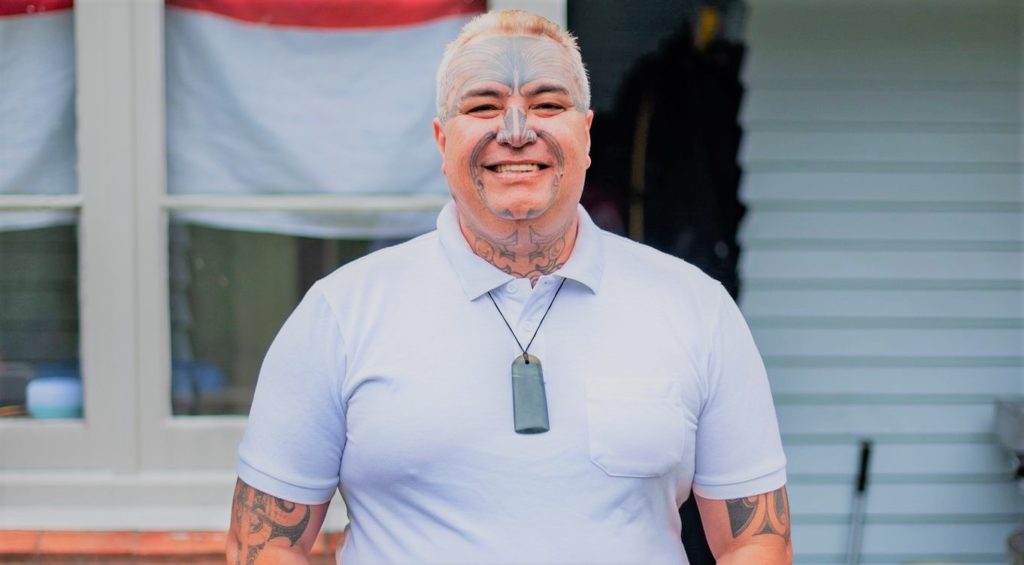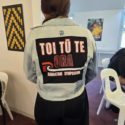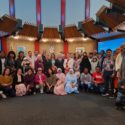‘Kahukura’ is the what some iwi call the kuaka (Bar-tailed Godwit) which at any given time leads the flock as they traverse the globe from feeding grounds in Aotearoa to breeding grounds in the Arctic. As one bird tires, another takes its place. The air produced by the collective movement of the manu wings uplifts and helps the whole flock achieve its goals.
Whānau in communities on the margins of society are already having conversations with community worker, Eugene Ryder, about the kahukura model of leadership under the korowai of He Kuaka Trust. He Kuaka is an E Tū Whānau inspired community initiative that uses the behaviours of the kuaka as a metaphor for whānau strength and support.
Eugene Ryder was introduced to the Trust, and the kahukura metaphor, by E Tū Whānau founding kaiwhakahaere, the late Ann Dysart and community activist, Denis O’Reilly.

Kahukura – a metaphor for inspiring leaders
Eugene uses the kahukura metaphor in conversations with whānau about their own leadership skills and the potential for leadership in those around them. Some are already acknowledged as kahukura in their own whānau or peer group but all, he says, have the potential to lead. They just need the opportunity to develop and demonstrate it.
“We identify the potential that exists within whānau. We help them develop it and realise that everyone has a contribution to make and that every person in that whānau and / or community is a kahukura in the making.”
Eugene often finds himself challenging traditionally male-dominated roles in whānau and communities.
“There are many types of leaders, and some are dictatorial. ‘This is my castle; this is my house’. The ‘you do as I say’ kind of thing.
Some of our men who have struggled through state care and prison have taken on that attitude as a safety mechanism. From their perspective, we’re asking them to put themselves in an unsafe space because they’re so used to having closed attitudes and closed doors to their minds. Being able to open their minds to have conversations about different kinds of leadership and the different kinds of kahukura that exist in their whānau and their community enables them to step up to a new realm of leadership.”
Eugene often also uses marae kaupapa as a way to talk about leadership.
“The kaikōrero is seen as having the lead role on a marae but they can only do their job if they are supported by everyone else. If there’s no one cooking the kai, then there’s no role for the kaikōrero.
Even the tāne will admit that there are roles within their family where they can’t lead and so our conversations open their minds to delegating and sharing leadership roles within the family.”
He points to a belief in whānau Māori that the oldest sibling is supposed to take leadership, whether that’s speaking on the paepae or doing the karanga for the whānau on the marae.
“But that’s not necessarily true. We have, for example, whānau where the youngest sibling is the holder of the reo. They lead in that area and that kinda breaks tradition. I think what we’re talking about is leadership at any level. That’s about succession planning as well.”
“A leader has to know when to step up into another role to allow others to step into their role.”
All whānau welcomed by Eugene Ryder
Eugene Ryder gives an example of recent mahi with a group of young tāne who have successfully completed te reo and tikanga courses at Hoani Waititi Marae in Auckland but who don’t know what to do next. The He Kuaka team involved them in kapa haka and took them diving, hunting and fishing, all the while helping them understand how the different roles involved in those activities are essential to the whole enterprise.
“There are no whānau that comes to us that we don’t work with.”
Many of the whānau Eugene works with are living in urban areas and are disconnected from both mainstream and Māori communities for a variety of reasons.
“A lot of people living in Wellington don’t come from Wellington, but they call it home, so we take the opportunity to connect them with local marae, or ngā hau e whā marae that aren’t tribally aligned, to help support them on their journey toward reconnection, if that’s what they want.”
No matter who he’s talking to the conversation always comes round to opportunities for their mokopuna and the generations that follow.
“I haven’t met any whānau that doesn’t want the best for their whānau. Even with the little resource that they have, every parent wants their tamariki to be healthy, wealthy, have a job, decent education, food in their belly and a roof over their head no matter where they live, whether it’s on the street, or whether I’m talking to them in prison. They want the same thing for their children as the local bank manager or the local postman.”
Kahukura – a symbol of hope for Eugene Ryder
Each conversation he has deepens Eugene’s insight into the sharing of power, the art of delegation and the importance of allowing others to make decisions for themselves. He thinks those with power and prestige in our mainstream society could learn a lot from the whānau he talks with.
“A lot of our politicians are taking advice from people who don’t have life experience and sometimes the decisions they make fall negatively on members of the communities we work with.
These communities are small. They’re not a majority in this country, therefore their needs and wants are not a priority for the decision makers and I feel they’re impacted on negatively. That costs society a lot.”
It’s actually about working with kahukura and tamariki and pēpē in areas that are not well recognised or understood by mainstream society. It’s about being proactive rather than reactive in developing leadership in these communities.
He returns to the metaphor of the kahukura and its role within the wider kuaka flock.
“The fact that the kuaka can become a kahukura based on their contribution to their whānau or community is, for many in communities on the periphery of society, a symbol of hope.”
Eugene Ryder
Want more?
Read about E Tū Whānau kaupapa, vision, and Mahere Rautaki (Framework for Change) 2019 – 2023
Join the E Tū Whānau communities on Facebook, Instagram and YouTube.



